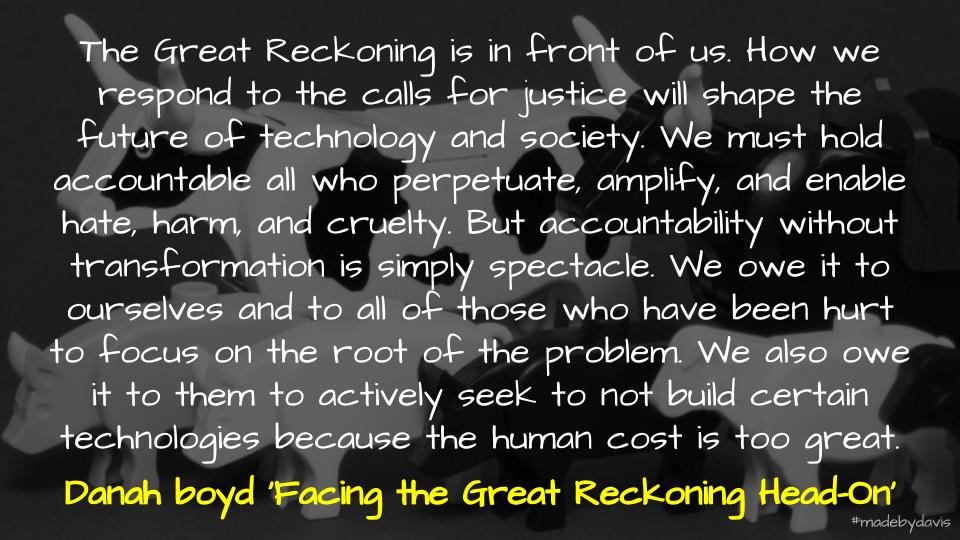In a keynote at Educause’s annual conference, danah boyd the role played by schools in building the social fabric of the future.
Beyond interests, we look for people who are like us because this is easier, more comfortable. Sociologists call this “homophily” — birds of a feather stick together. But there are choices that we make in an education context that increase or decrease the diversity of people’s social networks. And those choices have lifelong and societal consequences. Those choices happen whether we intend for them to or not.
boyd argues that there are three ways in which people bond: an intrinsic alignment, extrinsic enemy and shared vulnerability. I guess this is why things like school camps and outdoor education activities are so powerful. However, with all this, building bonds and social ties seems to have been something overlooked during the pandemic and offsite learning.
For the last year, as students have negotiated K-12 and college during a pandemic, the lack of awareness about the importance of social tie development became even more profound. We’ve seen countless tools built to help students obtain the school material. Teachers invested in finding ways to transfer classroom pedagogy to the internet, to produce more interactive and compelling video content, often using tools like polls to interact with students. But the primary relationship that was considered was one rooted in a notable power differential — the dynamic between the teacher and the student. Yes, students have still been required to negotiate group projects on Zoom, but how many tools have been rolled out this year that are really about strengthening ties between students? Helping students connect with others in a healthy way? Most of what I’ve seen has focused on increasing competition and guilt. Tools that are designed so that everyone can see each other’s assignments, complete with timestamps that reveal the complex lives students face navigating virtual school. Tools that privilege those who can perform. And tools that are rooted in accounting and accountability. Why are we not seeing tools to help students bond across difference?
The problem is that in a world of polarisation and social fracture, connections are the strongest weapons we have. As boyd explains,
To radically alter how people see the world, you have to alter their connections to those who might challenge these new frames.
boyd puts forward some ideas for a more thoughtful social fabric. These include pushing back on drumbeat around stranger danger so that we can actually speak to others, creating digital outreach programs to support those in pain online, and being more deliberate about social networks within schools.
If you put the social network at the center of your work, how might that change some of your practices? As an administrator, you could assign classrooms strategically. As a teacher, this could shape how you constructed group projects, how you seated students. You do much of this by feel already, but a tool lets you shift your goals. Rather than making your goal be about the success of the group project, imagine a goal that’s about strengthening the graph of the students.
Although boyd’s focus is on the American education system, it is still an interesting concept to consider. Personally, I have not seen a lot of opportunity to build social ties. Sadly, when there is a will there is a way and some students find their own way to connect in less structured spaces. Although I am an advocate for more deliberate social spaces in education, someone has to support such spaces.


